Document Management System Intuit Hosting onboarding and setup guide
by Intuit• Updated 1 month ago
Before you start:
- The end-to-end process for onboarding a Document Management System (DMS) database can be considerably lengthy. It's normal for the process to take several days with large databases.
- Don't use DMS at all while zipping the files or copying files needed to run a database repair.
- Don't use DMS for anything other than viewing documents that are already stored in DMS while the files are being uploaded.
- It's important to run the Database Repair first. This avoids bringing any existing DMS database issues into the hosted environment.
- Since repairing the database can take hours, it can save a lot of time if you start zipping up the Detail folder while the Database Repair is running.
Table of contents:
Running a Database Repair
If you recently ran DBRepair to fix an issue with your DMS database, this can be skipped.
To repair your DMS database:
- Create a folder on your local desktop named DMS.
- Open the DMS program and make note of the Current Database Path shown at the bottom.
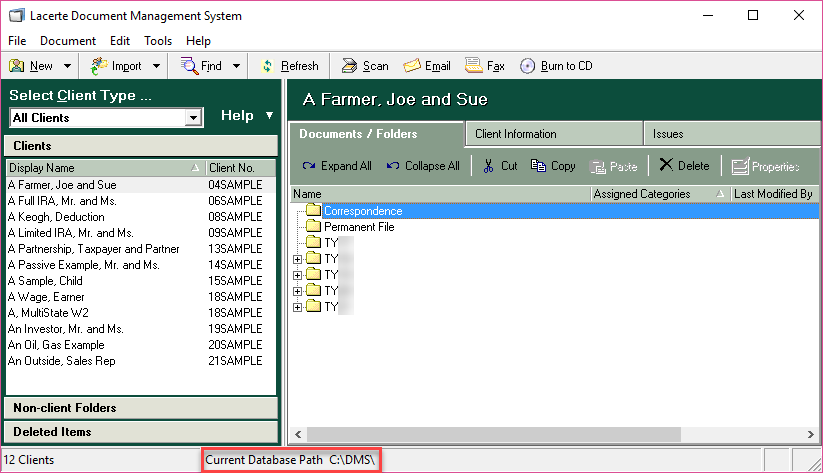
- Have all users close out of DMS.
- Open File Explorer and browse to the noted path.
- Highlight all DATA, Locks, Refresh, and Users files and copy then paste them into the DMS folder you created on your desktop.
- Browse to C:\Program Files (x86)\Intuit\DMS and double-click DBRepair.exe.
- This will appear as DBRepair if known extensions are set to be hidden on your computer.
- Select OK to close the Information pop-up.
- Select Browse, and then double-click Desktop.
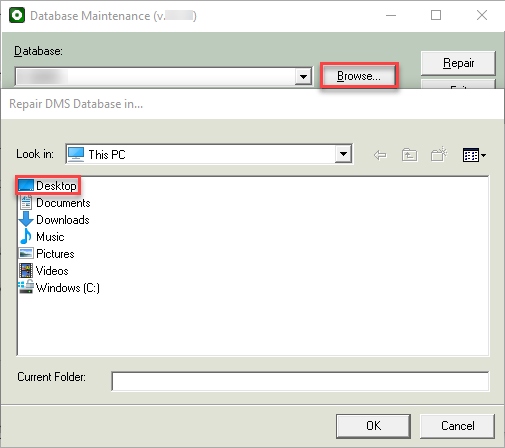
- Highlight the DMS folder then select OK.
- After the repair completes, copy and paste the DMS folder from your local desktop into the I:\ drive in the Rightworks environment.
- This can be zipped if needed, but the size is often small enough that it can just be copied and pasted.

Zipping
If your DMS Database is on a server, you can save time by zipping the files from the server itself. Remote into the server if possible to run the zipping process.
- Open the DMS program and make note of the Current Database Path.

- Have all users close out of DMS.
- Open File Explorer and browse to the noted path.
- If you skipped Running a Database Repair, when you browse to the last folder in the path, don't open that folder since you'll be zipping up the entire folder.
- If you have started Running a Database Repair, open the last folder in the path. You will be zipping up the Detail folder inside.
- Right-click on the folder you will be zipping and select to Send to.
- Windows 11 users need to select Show more options to see this choice.
- Choose Compressed (zipped) folder.
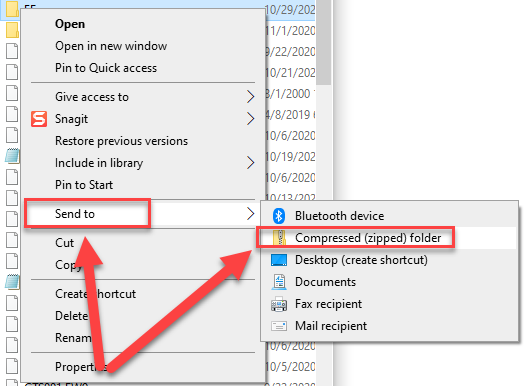
Zipping may take some time - make sure that your computer does not power off or go to sleep as this will interrupt the process.

Uploading
We recommend using a hard-wired internet connection. Avoid running background applications that use large amounts of internet bandwidth during the upload.
- Sign in to the Rightworks File Manager. The I:\ drive is selected by default in the left column.
- File Manager should be accessed locally, outside the hosted environment.
- Select the blue ↑.
- Either drag and drop the file(s) into the Drag and drop files here area, or select Add... and highlight the folder and select Open.
- Once you have the zipped folder added to the Upload Files window, select Upload.

Errors during upload or upload failed
Errors received during uploading, or the upload failing, are due to connection instability.
Before you begin:
These steps require 3rd Party Software to be installed on your computer. See here for more information on this program before installing. If your DMS Database is on a server it can save a lot of time if the files are zipped from the server itself. Remote into the server if possible to download 7-Zip and run the zipping process.
Zipping may take some time. During this time, ensure your computer does not power off or sleep, as this will interrupt the process.
- Download 7 Zip installer here.
- Run 7z1900-x64.exe.
- You can usually find this file in the downloads section of your internet browser or in your Downloads folder. You can also use Ctrl+J to open the Downloads window in your internet browser.
- On the 7-Zip 19.00 (x64) Setup window, leave the default location for your Destination folder then select Install.
- When the green bar reaches the end it will tell you 7-Zip 19.00 (x64) is installed, select Close.
- Use File Explorer to browse to your DMS Database.
- See steps 1-3 in the Zipping section for detailed instructions. You will be re-zipping the same folder as in those steps but this time using 7-Zip to create smaller, easier to upload zipped files.
- Right-click on the folder you will be zipping then hover your mouse over 7-Zip and choose Add to archive…
- Select the Archive format drop-down and select zip if not already selected.
- Near the bottom left, select the Split to volumes drop-down and select 1000M.
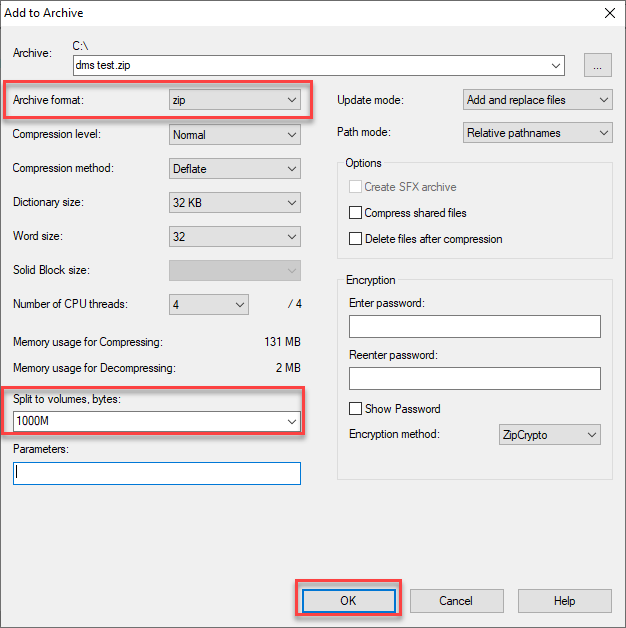
- Select OK. You'll see a progress window displaying the status. Depending on the size of the folder, it may take some time.
- After this completes you will see the smaller zip files in the same location as the original folder (*.zip.001, *.zip.002, *.zip.003, etc where * is the name of the original folder)
- Upload all of these zip files created by 7-Zip. Refer to the Uploading your zipped folder section above for detailed instructions. If the process fails, take note of the last file that successfully uploaded and begin the upload again where you left off.
- Ex. If the upload fails while uploading file 056, you should re-upload files 056 to the end, you do not need to select 001 through 055 again.
- Once the upload is complete, you can select Log Off in the upper-right corner if additional files don't need to be uploaded at this time.

Extracting
- Open File Explorer.
- Highlight the zipped folder.
- Select the Compressed Folder Tools Extract tab that appears.
- Select Extract all.
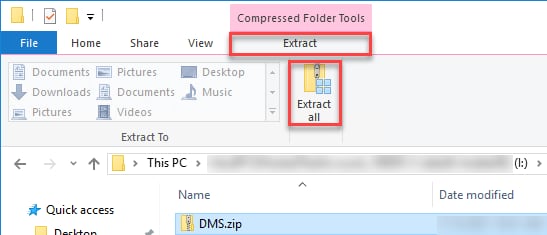
- On the Extract Compressed (Zipped) Folders pop-up click Browse to browse to where you would like the folder extracted or type the desired path.
- If you zipped up just your Detail folder, use the path I:\DMS to have the Detail folder directly extracted into the DMS folder with the repaired database from the Running a Database Repair instructions.
- Select Extract once the desired path is entered.

Installing DMS
- Sign in to the Rightworks AppHub.
- Select My Apps.
- Users with the User (no catalog) role will need the Account Owner or an Account Admin to install apps for them.
- If you are the Account Owner or an Account Admin and you want to install for a user instead:
- Go to Admin Controls ⮕ Users and select the name (or email address) for the user. This will take you to their apps page instead.
- Go to the Cloud Apps tab.
- In the Available Applications section, locate Lacerte Document Management System or ProSeries Document Management System.
- Select Install.
- The installation will begin, and when it's complete, you'll see the app in the Installed Applications section.

Completing setup for Lacerte Document Management System
These steps should be completed for each user.
- Download the prep file from your Intuit My Account dashboard, or copy it from where it's saved for the Lacerte tax program at I:\Lacerte\25tax\Option25.
- You can use Ctrl+C (keyboard shortcuts work by default in the hosted environment when it's maximized) or select the Home tab in File Explorer and use Right-Click+Copy.
- Open File Explorer.
- Select This PC from the left column, then browse to H:\Settings\ProgramData\Intuit\DMS.
- If you can't see the Settings folder, select the View tab and check the box for Hidden items.
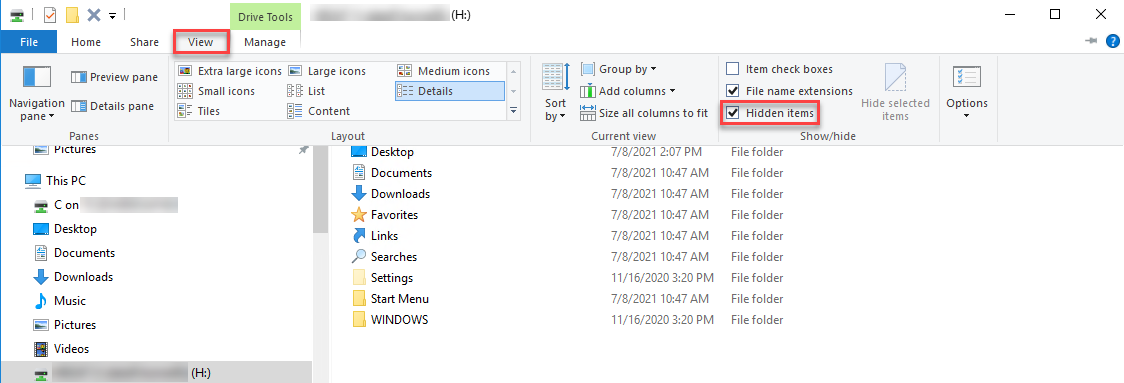
- If you can't see the Settings folder, select the View tab and check the box for Hidden items.
- Paste the prep.25 file inside the DMS folder.
- You can use Ctrl+V or select the Home tab in File Explorer and use the Paste button.
- Browse to H:\Settings\Program Files\Lacerte\25taxpln\Data.
- Paste the prep.25 file inside the Data folder.
- Open DMS in the hosted environment and close out of all pop-up windows until you see the main DMS window.
- From the File menu, go to Database and choose Open.
- Select Browse then browse to your DMS Database then select OK.

Completing setup for ProSeries Document Management System
- Open DMS in the hosted environment.
- Enter your Customer Number (CAN) and Zip Code for licensing when prompted then click OK.
- If you closed out of this window by mistake, you'll be in demo mode. Click on the Tools drop-down at the top of DMS and select Update License Information to get to where you can enter this information.
- Close out of all pop-up windows until you see the main DMS window.
- From the File menu, go to Database and choose Open.
- Select Browse then browse to your DMS Database then select OK.

